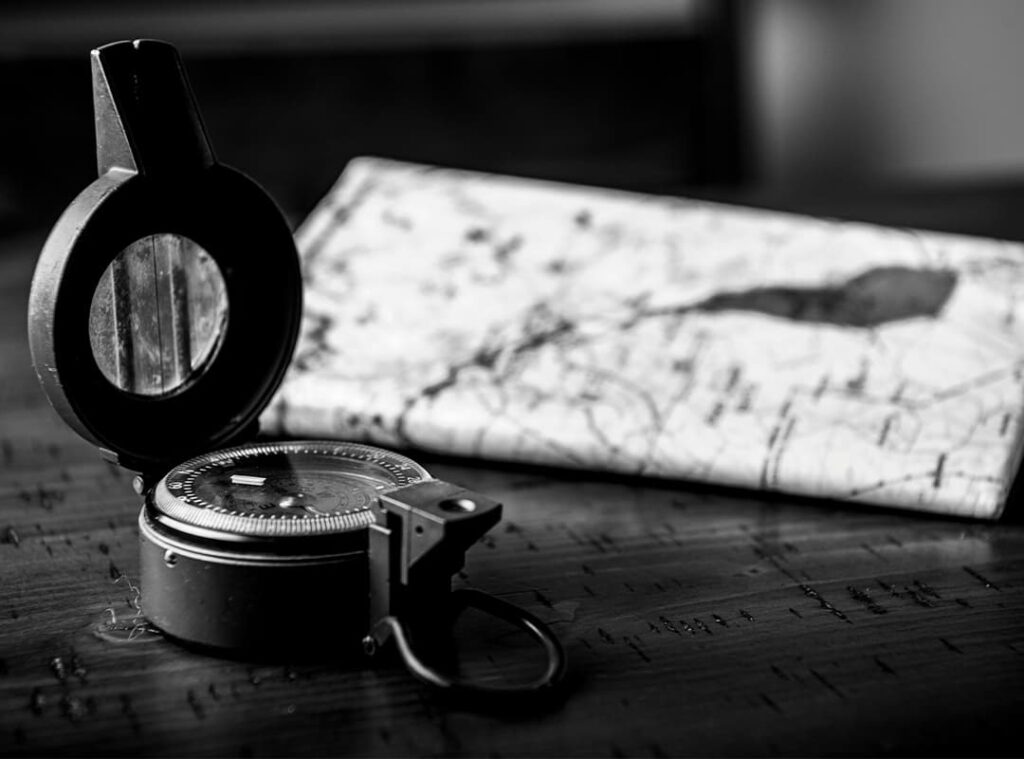To become an experienced navigator, you need to learn a number of basic concepts and techniques and practice these skills regularly. Realize that as a beginner you will make mistakes, and some of them will probably cost you a lot of time on the course. Learn to recognize what leads to these mistakes and be able to correct yourself before they become big mistakes. Even elite orienteers make mistakes, the difference is that they can catch themselves quicker, adjust accordingly, and minimize the time lost to mistakes. Practice, practice, practice…
Basic techniques
- Orient the map. Rotate the map to align with the terrain (and keep it aligned) so you can quickly select the features you need to navigate your route and match them to what you see around you.
- Understand contours: know how to quickly identify when landforms rise up (small oval areas surrounded by larger ones indicate a high point) or down (look for streams, swamps, or other bodies of water)
- Handrails: Using linear features such as trails, streams, fences, and power lines as a guide along the route. Advanced courses may use more subtle handrails such as marshes, reentrants, ridges, and vegetation boundaries.
- Point of Attack: A clearly recognizable element near your control that signals you to slow down and use precision navigation to find your control.
- Catching objects: Objects behind your control, such as a path, stream, or hill, that let you know you are under or over control.
- Waypoints: Objects that you mentally “check off” along the route that tell you that you are on the right track; often referred to as “keeping in touch with the map.”
- Approximate compass: Use the north arrow on the compass to roughly orient the map
- Exact compass: Set a bearing for your next control and find an object in that direction to move toward.
- Aiming off: Deliberately approach a control along a linear object to the left or right to increase the likelihood of quickly locating the control.
- Move: Return to a nearby obvious feature to retry the control.
As a general guideline, a competitive beginner has mastered the basics when they can complete the orange (medium) course at a pace of 10 minutes per kilometer for men or 12 minutes per kilometer for women. For example, a male runner who completes the 3.5 km orange course in 35:00 minutes has met the 10 min/km standard.
Best practices
- Distance estimation: estimate the distance traveled on trails and terrain using pace counts, time durations, etc.
- Approximate map: Get a general understanding of how different areas of the site are connected, with different possible routes between them.
- Precision map: Identify specific features, combinations, directions, and distances to accurately target a control point.
- “Red light, yellow light, green light”:
- Red: slow and careful movement, precise direction
- Yellow: slow, careful movement and orientation
- Green: full speed, rough direction
- Contouring: Practice staying at the same height along a hillside (imagine following a contour); a useful skill to use when faced with a foot that is crossing a very steep hill or valley
- Expanding a control (zooming in): showing an image of the area near a control so you can recognize when you are close
- Projection/visualization: Mentally visualize a map of the area and mentally visualize the area from the map
- CAR (Control – Attack Point – Route): while running, look at the map to find the next control, select a reliable attack point, and determine the route you will take to get to the attack point quickly and safely
